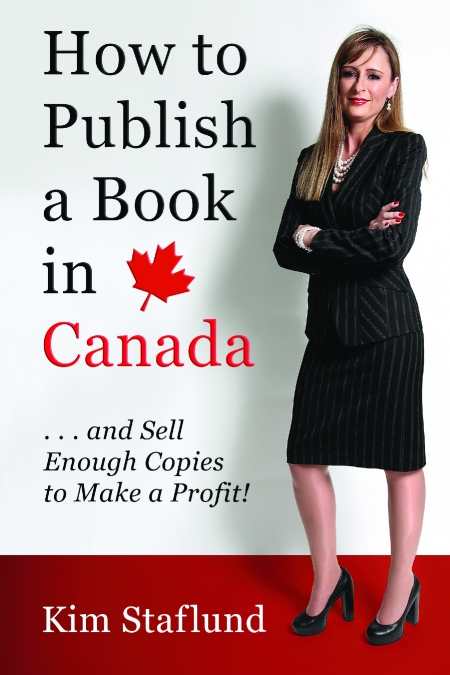How to Publish a Book in Canada … and Sell Enough Copies to Make a Profit!
This well-organized and thorough analysis of publishing options provides the insight necessary for Canadian writers to begin their career.
With How to Publish a Book in Canada … and Sell Enough Copies to Make a Profit, bestselling Canadian author and publisher Kim Staflund gives Canadian writers a thorough description of three different publishing models—trade (traditional), vanity, and supported (or “assisted”) self-publishing—and the pros and cons of each. Bringing her passion for the world of books to the task, she has created a comprehensive guide that will help authors write, publish, and market their books so that they can make a profit—and a living—doing what they love.
Although Staflund is objective and fair in her treatment of each publishing model, it soon becomes obvious that supported self-publishing offers today’s authors many benefits that the other models do not. Included among these are the author’s ability to retain copyright ownership and exert a greater degree of creative control over the finished product; a quicker, more efficient publishing process; higher earnings per copy sold; a commitment on the part of both author and publisher to a polished final product capable of competing with traditionally published books; and author retention of all finished files, should they want to pursue future publication elsewhere.
Staflund’s career path includes a college degree in business management and positions in publishing, sales, and sales management. In 2009, she founded Polished Publishing Group (PPG), which has since become Canada’s premiere supported self-publishing house.
Some of what Staflund reveals about the world of publishing may come as a surprise to authors, including how little they can actually expect to earn with traditional publishing models, and how the common agreement between publishers and bookstores that allows for the return of any unsold copies, even those that have been marked, disfigured, or otherwise damaged, for a full refund, hurts both authors and publishers. She asks, “how many manufacturers do you know of, in any industry, that would be able to stay in business for any length of time if their retailers were returning their products to them damaged and unsalable for a full refund?”
The volume is well organized, from the table of contents to the index, and its layout is attractive and easy on the eye. The front and back cover designs are clean and bold. Helpful interior graphics lay out the pertinent points, including the differences, liabilities, and benefits of the three publishing models, making it easy for authors to contemplate their choices. Typographical errors are few, though some of the spacing in the index is incorrect.
Staflund’s stated goal is to give Canadian authors insight into what it takes to produce a salable book in Canada, get it into the hands of the desired demographic, and earn a healthy profit in the process. In this, she has succeeded admirably.
Reviewed by
Kristine Morris
Disclosure: This article is not an endorsement, but a review. The publisher of this book provided free copies of the book and paid a small fee to have their book reviewed by a professional reviewer. Foreword Reviews and Clarion Reviews make no guarantee that the publisher will receive a positive review. Foreword Magazine, Inc. is disclosing this in accordance with the Federal Trade Commission’s 16 CFR, Part 255.

